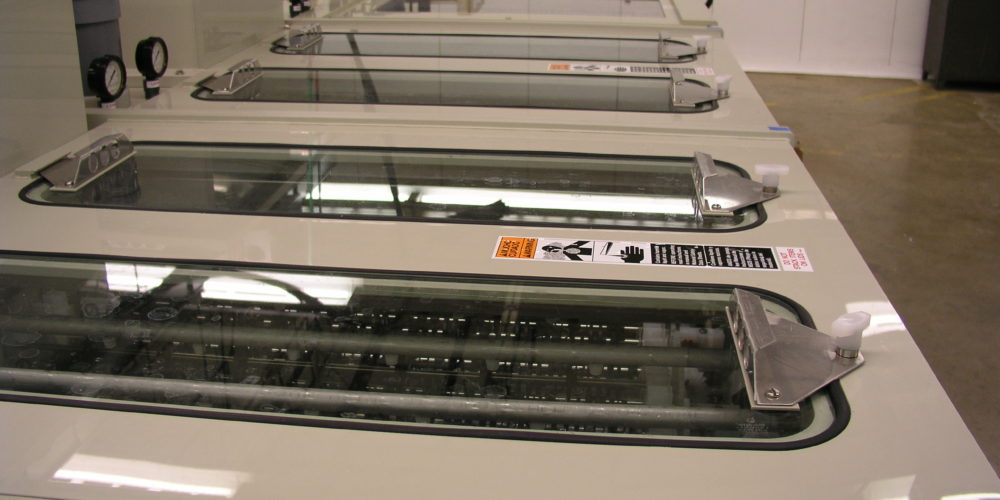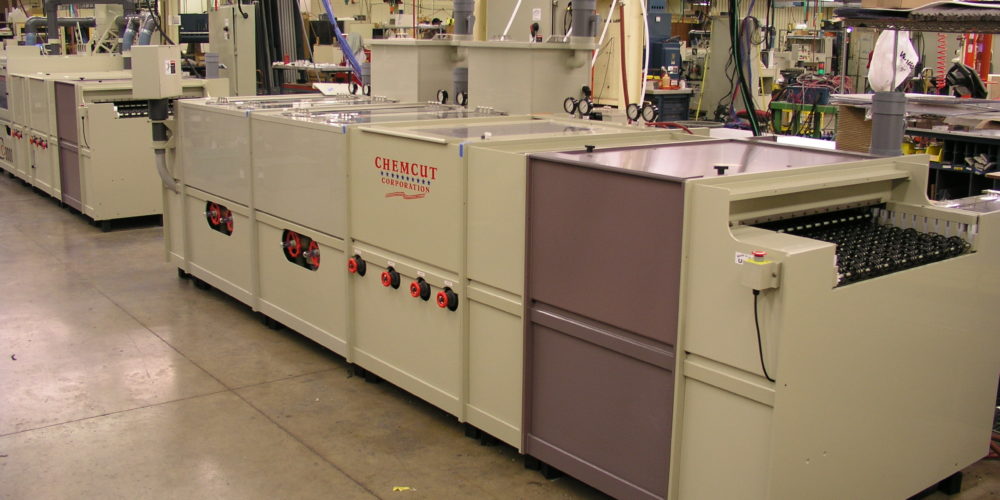
Stripping is one of the major final stages in wet processing. It is the process that occurs after etching where you remove the photoresist layer that was applied to your panels. This step in wet processing is not the most complex, however, it can be critical to your production. That is because this stage can have long dwell times depending on the stripping solution and the resist used. If the dwell time becomes too long; it has the possibility of bottlenecking your production. Thankfully, bottlenecks can easily be avoided if you thoroughly manage your stripping process. Here are some considerations you should consider for your stripping process to ensure you do not have any production issues.
Production Rate and Dwell Time
When it comes to your stripping process, you must ensure that it can handle the production rate you are looking to obtain. If stripping cannot be done as fast as the previous processes, it will cause a backlog of panels that will have to run through the machine again – thus creating a bottleneck. How fast stripping can be performed can depend on variables such as the compatibility of your resist and stripping solution, and how large your stripping section is. If your resist and solution are ideal for each other, you can maximize the use of your stripping machine. Typically, certain stripping solutions are made for specific resists. Since these components tend to be proprietary, it’s best to go with the provider’s recommended counterpart solution or resist. Having the correct pair will also mean you will be able to obtain a filterable particle size (more on that in the next paragraph). If the stripping process cannot be completed at the same conveyor speed that your other processes are running on, then you will likely have to compensate for this by extending the stripping section or by adding additional stripping modules. Doing this allows you to obtain the same “dwell” time inside the stripper without having to reduce the conveyor speed.
Particle Size
In stripping, it is important for your resist to be removed in sufficient particle size. Ideally, the resist should come off the panel in chips. These make the resist chips easier to filter off so that they do not bypass or overload your filters. If the resist bypasses your filters, it can cause your spray nozzles to become clogged. If your filters are overloaded, then you would see a reduction in spray pressure. Both matters result in a reduction in the efficiency of your stripping machine. Particle size is generally affected by the chemistry concentration. It is recommended not to mess with the stripper solution concentration so you can maintain the correct particle size.
Production Methods
Depending on the production method you are using, you may have a harder time removing all the resist. For instance, if you are running an additive or semi-additive process, where you place a resist and plate the metal up, you could run into issues. What typically happens is when the metal is plated, sometimes the plated metal builds up and overlaps on top of the resist. This makes a pocket where the resist is trapped and therefore the stripper solution has difficulty reaching it for removal.
Clean out filters regularly
It is also key to make sure that your filters are cleaned out on a regular basis. Even if your particle size is correct, too much build-up can cause a reduction in spray pressure. How often you will have to clean the filters will greatly depend on the scale of your production, and therefore the frequency of the filter checks will have to be determined by you. This can be easily done by just giving the filters a quick check either in between shifts or at the end of the work day.

We have built and serviced several stripping machines. If you have any questions about how to improve your stripping process, please feel free to contact us with your questions.







